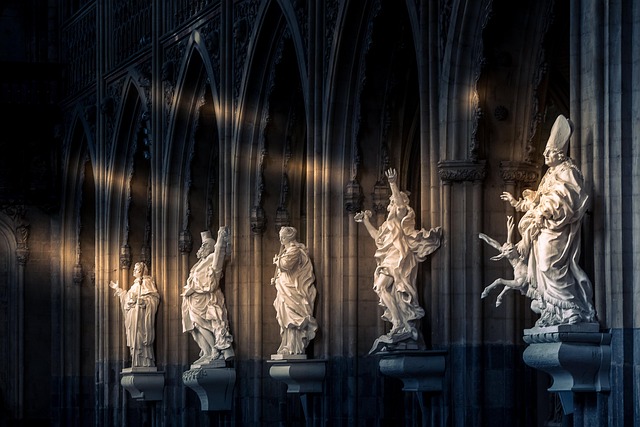The notion of a crown or headpiece that embodies divine authority and sanctity is as old as the earliest stories of human civilization. Across cultures, a diadem—whether carved from precious metal, woven from cloth, or etched with sacred symbols—has served as a tangible reminder of the covenant between the earthly and the transcendent. In the context of the holy diadem, the focus sharpens on a particular form of this timeless emblem that appears in the rituals, iconography, and personal devotion of many faith traditions. Its presence in liturgical ceremonies, royal coronations, and devotional objects speaks to a shared human longing to express reverence for the divine through material culture.
The Roots of the Holy Diadem in Ancient Cultures
In the earliest recorded societies, crowns were more than ornamental; they were potent symbols of sovereignty, divine favor, and spiritual guardianship. Archaeological evidence points to the use of diadem-like headgear among the ancient Egyptians, who associated the crown of the pharaoh with the god Horus, embodying both kingly power and divine legitimacy. Similarly, in Mesopotamia, the symbol of the “kilt of the gods”—a stylized, ornate headband—served as a mark of sacred authority worn by priests and priests.
- Egyptian tradition: The use of gold and lapis lazuli in pharaonic headwear signified the sun god Ra’s presence.
- Babylonian practice: The “bark of the king” was worn during temple rituals to emphasize divine approval.
- Indus Valley: Early metalwork uncovered in Harappa suggests ceremonial headbands linked to spiritual leadership.
These early examples set a precedent that the holy diadem, as a religious artifact, would follow: a physical manifestation of spiritual authority and a conduit for divine presence.
Symbolic Significance Across Traditions
While the form of a holy diadem varies, its symbolic core remains consistent: it represents the wearer’s communion with the divine. In many religious traditions, the diadem is believed to protect the wearer from spiritual harm, to elevate the soul, and to serve as a reminder of higher moral obligations.
“The crown is not merely an ornament, but a covenant between the mortal and the divine, a reminder of the call to holiness.” – Traditional Spiritual Teacher
In Christian iconography, the holy diadem is often depicted on saints and martyrs, underscoring their purity and martyrdom. In Hinduism, the crown of the deity Krishna is rendered in gold and embellished with jewels, symbolizing cosmic wisdom. Islamic traditions sometimes reference the “throne of the Prophet”—a symbolic diadem that embodies spiritual authority without a physical object, reflecting the belief that true authority is rooted in knowledge and piety.
Liturgical Use of the Holy Diadem
During sacred rites, the holy diadem frequently appears as a central component. In the Catholic Mass, the pontiff’s white cassock is crowned with a jeweled tiara, signifying the Church’s unity under the papal office. In Orthodox liturgy, the bishop’s mitre—a form of diadem—is worn during ordination, denoting ecclesiastical authority and spiritual guardianship.
- Coronation ceremonies: The new monarch’s diadem, often studded with gemstones, symbolizes divine sanction of their reign.
- Religious pilgrimages: Devotees sometimes place a small diadem upon their heads as a sign of reverence during holy processions.
- Monastic traditions: Monks may wear a simple headband as a reminder of their vow to detachment from worldly status, yet the act itself is an acknowledgment of spiritual sovereignty.
The repeated use of the holy diadem in liturgical contexts reinforces its role as a tangible bridge between the temporal and the eternal.
Personal Devotion and the Everyday Diadem
Beyond formal rites, the holy diadem finds its place in the daily spiritual lives of believers. A faithful may incorporate a small, symbolic diadem—crafted from woven reeds, silver threads, or even a simple band of cloth—into their personal practice. This act serves to reinforce a constant awareness of the divine presence, even in mundane circumstances.
“When I place the diadem upon my head, I am reminded that my thoughts, words, and deeds should align with higher ideals.” – A Devotee of the Path
Such everyday rituals illustrate that the holy diadem is not only an object of ceremonial grandeur but also a practical tool for cultivating mindfulness and spiritual discipline.
Modern Interpretations and Cultural Adaptations
In contemporary times, the concept of the holy diadem has evolved to incorporate new materials, artistic styles, and cultural meanings. Contemporary artists reinterpret the ancient diadem through jewelry design, incorporating elements of modern fashion while preserving its symbolic resonance. In many globalized societies, the holy diadem has become a symbol of cultural identity, especially for diaspora communities seeking to maintain a connection to their ancestral faith.
- Eco-friendly materials: Biodegradable metals and recycled fibers are used to craft environmentally conscious diadems.
- Interfaith symbolism: Artists combine motifs from different traditions to create diadems that celebrate pluralism.
- Community events: Diadem-making workshops serve as gatherings where participants can share stories and strengthen communal bonds.
These modern adaptations show that the holy diadem continues to inspire and unify, proving that sacred symbols remain dynamic and relevant.
The Role of the Holy Diadem in Interfaith Dialogue
When members of different faiths share their understanding of the holy diadem, a platform for dialogue emerges. By exploring common themes—such as humility, stewardship, and divine connection—interfaith communities can build empathy and mutual respect. In many interfaith assemblies, participants exchange handcrafted diadems, each representing their unique spiritual narrative yet united under the shared desire for peace and understanding.
Conclusion: A Symbol that Transcends Time
The holy diadem, whether worn by a monarch, a cleric, or an everyday devotee, embodies a timeless bridge between the earthly and the divine. Its history stretches back through ancient Egypt, Mesopotamia, and the Indus Valley, and it continues to evolve within modern cultures. By honoring the holy diadem, individuals honor the sanctity of their faith, the continuity of tradition, and the shared human aspiration to connect with something greater than themselves.




